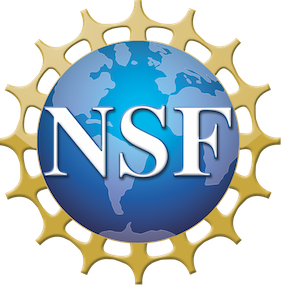Calculus: Newton, Leibniz, and Robinson Meet Technology
A textbook emanating from
Project DIRACC
Patrick W. Thompson and Mark Ashbrook
A Work in Progress (Original posting: July, 2015. Latest revision: August, 2019)
Cite as:
Thompson, Patrick W., Ashbrook, Mark, & Milner, Fabio. (2019) Calculus: Newton, Leibniz, and Robinson meet technology. Retrieved from http://patthompson.net/ThompsonCalc/.
NSF Grant DUE-1625678
Click here to subscribe to occasional updates as we revise the textbook or add new material. (The same link can be used to unsubscribe.)
Click here for articles and reports of DIRACC project.
Click here for license information.
Textbook:
Preface for Students
Preface for Instructors
Chapter 1:
Infinitely Small and Infinitely Large Quantities
1.0 Installing Graphing Calculator 1.1 Large and Small Quantities 1.2 Large and Small are Relative 1.3 Large Variations are Made of Tiny Variations
1.4 Infinitesimal variations and zooming a graph1.5 Constant rate of change
Chapter 2:
Trigonometric Functions
2.0 From Trigonometry for High School to Trigonometry for Calculus2.1 A Graph You've Surely Seen 2.2 The Meaning of x in y = sin(x ) 2.3 Positive and Negative Angle Measures 2.4 Angle Measures Greater than 2π or less than -2π 2.5 The Meaning of y in y = sin(x ) 2.6 The Tangent Function in Trigonometry 2.7 The Meaning of x and y in y = tan(x ) 2.8 Properties of Trigonometric Functions
Chapter 3:
Functions, Variables, and Graphs
3.1 Variables, Constants, and Parameters3.2 Graphing Calculator (GC)3.3 Using Graphing Calculator3.4 Typing Mathematical Statements in GC
3.5 What is a Graph?3.6 How GC Draws Graphs3.7 Understanding GC's DNA3.8 (To Be Rewritten)3.9 Coordinate Systems3.10 Functions3.11 Function Notation3.12 Using Function Notation3.13 Function Notation and Mathematical Models3.14 Independent Variable vs. Argument of Function3.15 Constant Rate of Change & Linear Functions3.16 Operations on Functions3.17 Properties of Functions3.18 Inverse of a Function3.19 Transformations of Graphs: An Application of Inverse Functions
4.1 Constant Rate of Change4.2 Differentials as Linear Functions4.3 Differentials in Action4.4 Rate of Change at a Moment4.5 How Small is "Small Enough"?4.6 Functions Having a Value At Which There Is No Rate of Change at a Moment4.7 Wrinkly Functions4.8 Infinitely Wrinkly Functions Having No Rate of Change at Any Moment4.9 Exact Rate of Change Functions
Chapter 5:
Accumulation from Rate of Change
5.1 Introduction to Accumulation Functions5.2 Approximate Net Accumulation Functions from Exact Rate of Change Functions5.3 Exact Net Accumulation Functions from Exact Rate of Change Functions5.4 Overview of Accumulation from Rate
Chapter 6: Rate
of Change from Accumulation
6.1 Approximate Rate of Change in Open Form from Exact Accumulation in Closed Form
6.2 Closed Form Rate of Change from Closed Form Accumulation6.3 A Garden of Exact Rate of Change Functions
6.4 Big Assumptions That We Made
6.5 The Mean Value Theorem
7.1 Properties of Rate of Change Functions and What They Tell Us7.2 Higher Order Rate of Change Functions
7.3 Optimization7.4 Related Rates7.5 Local Linearity, Indeterminate Forms, and L'Hospital
7.6 More Fundamental Theorem of Calculus -- in Contexts
Chapter 8: More on Integrals
8.0 Review of Terms and Meanings8.1 The Nature of Integral Problems and Ways to Approach Them8.2 Regions and Their Signed Areas8.3 Volumes of Regions in Space8.4 Arc Length and Surface Area8.5 Applications of Integrals in the Sciences and Social Sciences
Chapter 9:Integration Techniques
9.0 Motive for Integration Techniques9.1 Rate of Change Functions, Accumulation Functions, and Antiderivatives9.2 Undoing the chain rule9.3 Undoing the product rule9.4 Antiderivatives of expressions involving trigonometric functions
Chapter 10:
Approximating Functions' Values
10.0 Approximating Rate of Change and Accumulation Function's Values10.1 New Perspectives on Approximating Accumulation Functions from Rate of Change Functions10.2 Polynomial Approximations, Taylor Series, and Convergence at a Moment10.2-old Sequences, Series, and Convergence at a Point (traditional)10.3 Sequences, Series, and Convergence Over an Interval
Chapter 11: Polar Coordinates
11.0 Review of Polar Coordinates11.1 Graphs in Polar Coordinates and Their Properties11.2 Coordinate Conversions11.3 Areas of Regions Bounded by Graphs in Polar Coordinates
Calculus: Newton Meets Technology is licensed under a Creative Commons Attribution-NonCommercial-ShareAlike 4.0 International License .http://patthompson.net/ThompsonCalc .



